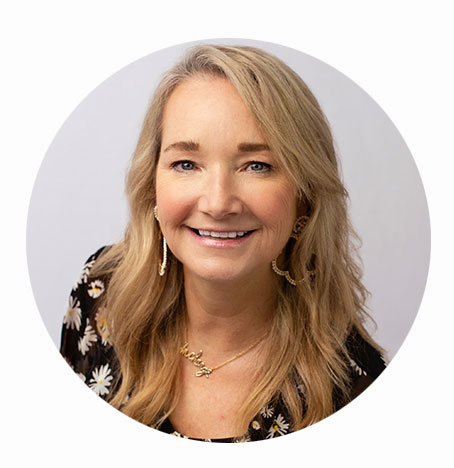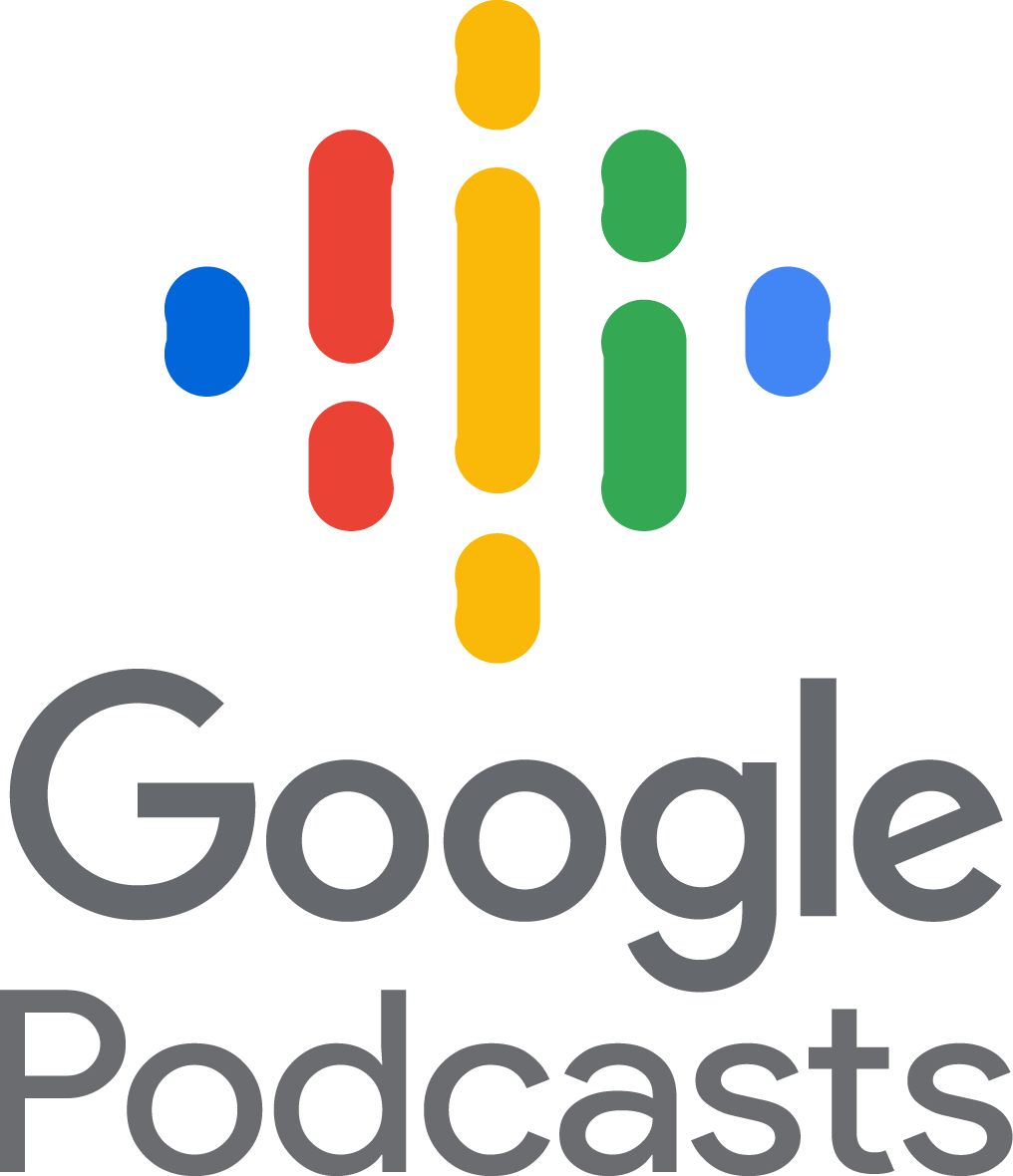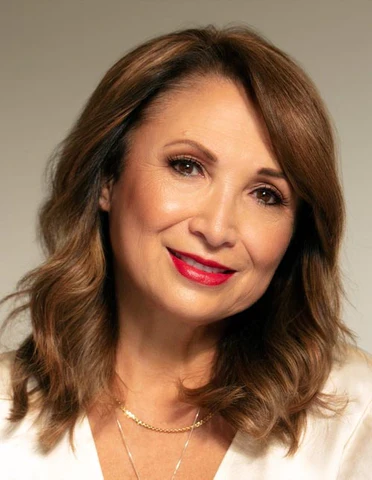Lara Schmoisman
00:05
This is Coffee Number Five. I’m your host, Lara Schmoisman.
Cindy Marshall
00:11
Hello, everyone.
Lara Schmoisman
00:12
Welcome back to Coffee Number Five. My coffee is ready as always, and always getting a little cold because I do hundred things and I keep seeping away from my big cup. Anyway, today I’ve been talking about visionary. People sometimes tell me that I’m visionary. I think I’m an early adopter times because I am not afraid to try new things. Like for example, when I started with this Internet world, I would say late nineties, and I was young, but I was really an early adopter. Not only was using the Internet, I was dreaming how I can use the Internet, which that was very unique back then. And I see the opportunities and I see how someday, because back then it wasn’t possible that my background in radio and in television can be connected with this Internet world. And you know what?
Lara Schmoisman
01:06
We’re here already and you’re going to be listening to this podcast because that technology became possible. But at the same time, this Internet world became data driven, which is insane. We can learn so much from what we do, but we also can learn from data in anything we do. So today I have a special guest for you. I have Cindy Marshall. We are together in a community woman in retail, and I had the pleasure to talk to her a while ago and she was so insightful and she had so much knowledge about the retail world that I said, I have to bring her to the podcast. So here we are today. Thank you so much for being here, Cindy.
Cindy Marshall
01:52
Thank you, Lara. Thank you for inviting me. I’m delighted to be here.
Lara Schmoisman
01:56
So, Cindy, give us a little bit story where you started, because everyone started somewhere, is something that you wanted to do retail, you want to did life take you the place that you thought you would be in?
Cindy Marshall
02:13
It’s interesting because I actually did study marketing and advertising in college. I never expected that I would be in what I call the multi channel retail space, direct to consumer. But that’s really what happened. At age 16, I was behind the service desk at Sears and Roebuck at Montgomery Mall in Potomac, Maryland. So I did get, my first job was in retail, but I ended up spending a, I spent my first five years of my career in publishing, where I worked for, I launched some magazines, Ultra Sport magazine and Bicycle Guide. And then I worked for and launched the walking magazine. And then I worked for Ink magazine. And that’s really where I cut my teeth on the analytics and direct marketing. And then I went and spent a decade at retail stores and catalog companies. So working, that’s how we started.
Lara Schmoisman
03:11
Everything started as a catalog.
Cindy Marshall
03:13
Catalog, right. So I worked for a company called Jill, and they’re still around today. And I ran their marketing and we had four different titles, so that was quite fun. And then I worked.
Lara Schmoisman
03:24
We were talking a while ago with one of our guests. I wish I could remember who it was, but they started in yellow pages.
Cindy Marshall
03:31
Oh, did they really? That’s so funny, because we just got a yellow pages yesterday at home and we’re like, really? Does anybody really even have a phone number anymore? Like, why?
Lara Schmoisman
03:39
Yeah, well, apparently people do if they still print them, but. Okay, so you became, today you are a consultant, you work with incredible companies, too, and you find it’s very interesting because you have the experience on retail, but also in digital retail, which is there completely two different worlds, that at the same time they are united.
Cindy Marshall
04:04
I think they’re one and the same. So just to finish on my background, because I spent a decade in catalog and retail stores, and then I added digital to the mix for ten years where I worked for different brands like Vermont country store, performance bicycle. And what I think is if you have a retail store, you’re still targeting the consumer and you want to drive them into the store. And so it’s very similar to the digital world, but the customer can’t touch and feel it, so you’ve got to figure out how you’re going to give them that experience online. And it was just a different media to drive people to the website versus driving people to the store. And for a long time, the retail stores is where everything was at, and now it’s really more a showcase for your online business.
Cindy Marshall
04:52
And believe it or not, people are still using print to drive traffic to digital because 50% of the people may opt out of your email, so they’re not, you can’t reach them.
Lara Schmoisman
05:03
But also because of the cost of PPC.
Cindy Marshall
05:07
Yes.
Lara Schmoisman
05:08
Many times it makes more sense to spend time in another mediums and create different brand awareness to go to your website.
Cindy Marshall
05:17
Yeah. And I love catalogs because I get ideas. I keep my stacks of favorite ones and it’s kind of like the magazines used to be. But, yeah. So digital marketing, it’s just evolving so fast. And that’s the thing that each of us running. As a consultant, I’ve run this business for twelve years at Shine Strategy, where we’re fractional chief digital officers and chief marketing officers, and we’ve got some technology experts and some executive coaching that we’re just adding to the mix. But we’ve seen inside over 50 brands and it. Things just aren’t the same for every client or brand. You really need to know the customer and be able to match that product to the customer and make it relevant. And that really gets into the customer database world.
Lara Schmoisman
06:14
Absolutely. So today in this world that you are mixing the world of retail that people need to go and digital because it takes a completely different skill set. You have to how to run a store. You have people fittings. It’s that you have to have two different themes to work on it.
Cindy Marshall
06:37
Correct. Store operations is very different than digital operations. In e commerce, that’s very different. And I’m not an expert in store operations, but I do understand how to get people into the store.
Lara Schmoisman
06:51
So how do you get people into the stores?
Cindy Marshall
06:55
So I do use radio, believe it or not, radio works really well. I use a lot of local media on Google, so local search, depending on the region. I use CTV and OTt ads, which actually work really well. And then the email. I mean, email is a huge driver and I will use direct mail, especially if I can’t reach people through email because not everybody’s subscribed. So I’ll use post.
Lara Schmoisman
07:27
Tell me a little bit about that piece because it’s something that is not very usual that brands still use direct mail. What do you feel like there is a difference of getting something tangible and how do you find those addresses? How do you get to that customer? How do you get.
Cindy Marshall
07:47
Well, so the direct mail is a push vehicle. So I’m not waiting for somebody to come to me. I’m actually finding you and pushing it to you. Just like email. But email, you’ve either signed up and you like the brand and you’ve ordered from me, but after you order, you might unsubscribe. But it doesn’t mean that you’re not a customer anymore and it doesn’t mean that you shouldn’t hear about what’s going on. So the direct mail, you can, if they’re on the. I would start with the first party data, the people that are on your list that have opted out from email. And what I do is create audiences that I put into Facebook ads and Instagram ads because they’re not going to see you through email, so they don’t know. And then I’ll go to direct mail.
Cindy Marshall
08:29
I would actually model them against the cooperative databases, the Epsilon and Oracle databases, and find out if Cindy Marshall’s household is a big spender or a small spender and then figure out if I want to spend that money to get a postcard or a flyer to her.
Lara Schmoisman
08:49
Okay, so let me ask you. Okay, so I’m very, so these Oracle databases, how do you get to it? And what kind of companies can afford this?
Cindy Marshall
09:00
The cost is anywhere from $55 to name, and they will do the modeling for you. It’s called a cooperative database. A lot of times they want your names. You need to give them your zero to 24 month buyer file and put that into the database. But it’s all blind, so you don’t know who’s in there. But if I’m selling bedding in rugs and I don’t want my competitors to have my names, I can block them. So I can say, here’s five companies I want you to block. But what happens is they build models and come back and say, based on your very best customers, I can find other customers that are very similar. So I could go after just the top 10%. They may find a million names.
Cindy Marshall
09:53
And I could say, here is 100,000 customers that I could actually market to and try them with a double postcard or a trifold depending on what you’re selling.
Lara Schmoisman
10:06
I see. And how do you see it? Can you get metrics or how this advertising that it was sent to homes?
Cindy Marshall
10:14
Yes. You do a match back. You do a computer match back so you know the name and address that you’ve sent to. And then once the order comes in, you’re matching it back.
Lara Schmoisman
10:24
Interesting.
Cindy Marshall
10:24
And then, yeah, there’s a whole attribution models that can do match backs.
Lara Schmoisman
10:28
And how do you have any examples that you can show us that this technique really works?
Cindy Marshall
10:36
Oh, I’ve used it to build tons of brands over the years. Yes, it definitely works. It’s become more expensive because of paper and postage. So you can’t put a 56 or 64 page catalog in the mail for less than a dollar anymore because it’s so expensive. But people are changing up the offer so that they’re putting a less expensive piece in the mail that will give you a taste of the brand.
Lara Schmoisman
11:08
Do you think I’m going to show.
Cindy Marshall
11:10
You some because I have them? Do I think just trying to see some of my pieces that are in my mailbox. These are all catalogs.
Lara Schmoisman
11:21
Yes, but my question is, do you think any company can create a direct mail piece?
Cindy Marshall
11:30
Yes. Yes.
Lara Schmoisman
11:31
And any company at any level or shut a company that is big enough or they have so many email addresses because these systems, Oracle and the other ones that you mentioned have a cost.
Cindy Marshall
11:47
Yeah, but the cost is they will do the modeling for free.
Lara Schmoisman
11:51
Okay.
Cindy Marshall
11:51
They come back and tell you and then you test it. So if they come back and find 100,000 names, I would test maybe 20,000 of them and do different offers and maybe do something like this, which is a trifold versus a postcard versus some companies can’t afford the bigger pieces. It depends what you’re trying to do.
Lara Schmoisman
12:18
What conversion rate you get from selling these mailers.
Cindy Marshall
12:23
What conversion rate?
Lara Schmoisman
12:24
Yes.
Cindy Marshall
12:25
Well, so first of all, it’s going to get the traffic to the site and then you can retarget to them. You can identify, there’s identity tools that will tell you of if I mailed 100,000 people, how many of them actually visited the site and then how many viewed a product, then how many put it in the cart, then I increased my abandoned cart emails and then how many converted. So it’s not all about just conversion and getting the order, it’s about building the brand awareness.
Lara Schmoisman
12:55
I’m all about the blind awareness. Everyone who listens to this podcast know how important it is, but at the same time I want. It’s really important to know this is working. These people are coming to the site.
Cindy Marshall
13:07
Correct? So, but it’s multi touch media. So I would then try to collect their email address and get them on the email file. I would. Some people use phone calls to call them up and welcome them. And the Facebook ads, you would do that at the same time. So you look at the whole campaign and was it successful? And I’ve had so much success. You can’t just do it once, you’ve got to do it at least three times.
Lara Schmoisman
13:39
Yeah. You have to be consistent. And we talk about that and it is something that I always talk to my clients about that consistency is key. But I’m so happy that you’re here and we’re talking about even we, I don’t think we ever had a guess that we talk about print catalogs or print postages or we talk about even phone calls to welcome them.
Cindy Marshall
14:02
Right. So this is a company called me and M that’s out of England, and their catalog continues to get bigger and bigger. They’re mailing into the US. They are now opening stores in the United States, but they have about twelve stores in the UK. They’re one of many companies that, like Bowdoin is another one. That’s a company I worked with for eight years. And our business started as a catalog business and then we built the digital. But somebody like me and Em has taken a business from the UK that has stores and marketing to the US because the population’s bigger and they’ve been doing it very successfully now for at least six years.
Lara Schmoisman
14:47
That’s very cool. That’s very cool. So what’s in the process? Because you say how do you select what items will resonate better in a mailer that in a promotion online or using the same? And when you say you retarget, you want to have the same products that people will see or you will choose different products and you choose more people to see the brand being the same.
Cindy Marshall
15:12
It depends on what you’re selling and who you’re going after. But typically it’s the best sellers that you would put in your direct mail piece and the best sellers that you would put on your campaigns for Facebook and your product listing ads. What are your top product listing ads in Google? So there could be some of those items, but what’s selling, like what’s hot right now, what’s selling well for you? Those are typically the things that you would put out on your campaigns.
Lara Schmoisman
15:47
Very cool. What other innovative techniques did you use outside the box? I always think about what else can we do? How can we help our clients to be unique and to be seen? Wow, I didn’t see this before.
Cindy Marshall
16:01
I use a lot of companies to identify the traffic that’s not logged into the website. So if I already know your brand and the website recognizes me and I’m a first party visitor, 20%, maybe you’re going to identify 20% of the people that have come to your website, but I like to get that up to 60% by using identity tools that can identify. Maybe I’ve got five email addresses as Cindy Marshall and you’re only recognizing me as one, but you don’t really know that it’s me. Other identity tools. Can I confine Cindy Marshall and market to her? If I put something in my cart and then people that have browsed or visited, you can identify them as well.
Cindy Marshall
16:57
But if somebody you want to make sure that you’re not remarketing on the email front unless you’ve gotten that opt in or they have an intent to purchase.
Lara Schmoisman
17:09
I see. One of the biggest challenge for small and medium companies or starting companies is to get that lead to get that email address. So what are your recommendations? How do you get those email addresses?
Cindy Marshall
17:24
The best way to get the email addresses is through, believe it or not, surveys. I used a company called Jebet who does this really well. What’s your home design style? Is it contemporary, modern, classic? And you answer the question and at the end you put in your email to get a discount. And so you get engaged. So that typically works really well. But you also need to be conscious that don’t serve the pop up right away to somebody that just comes to the site, wait till they’re three or four pages deep on the site and then offer them something to sign up. Why should they sign up for your email? If they don’t sign up, then the second or third time they’re back to the site.
Cindy Marshall
18:13
You want a modal to pop up and something else to say, I’ve seen you before, but I’m going to give you a break for a little while. So you don’t want to reserve that same pop up to the same customer until you’ve given them a little bit of a break.
Lara Schmoisman
18:27
Yeah. You want to give them a little bit of time to fall in love or to be interested in the products.
Cindy Marshall
18:33
Yeah, but there are different ways of doing it. One could be the pop up, one can be a modal that comes in from the side.
Lara Schmoisman
18:39
Yeah, but how do you get, I mean, we talk about meta ads, Facebook ads, Instagram ads. How do you make those ads attractive for people too? Because that’s a huge challenge to get people to click in that ad.
Cindy Marshall
18:52
No, it is, but I guess the most successful meta ads that I’ve had are product ads that are the best sellers that you can just scroll through, shop now, boom, be done. That’s getting right at the conversion. But if I want them to sign up for email, you’ve got to give them a hook, some way to get them in.
Lara Schmoisman
19:12
Give us an example. Give us a taste of what’s that hook.
Cindy Marshall
19:18
So it’s, let’s see, it’s Victoria Beckham’s birthday today. So I would have them run an entire campaign. It’s Victoria Beckham’s birthday. She’s offering 20% for you. Sign up today. I mean, that’s kind of like.
Lara Schmoisman
19:33
I know, but not every brand is Victoria Beckham.
Cindy Marshall
19:37
Right, I know. So, but if people don’t want to offer a discount, then give them some type of free. It’s not really a cookbook if you’re into the gifts. I mean, some people can offer a free item. So something that you want to give them as a gift with purchase or some free item.
Lara Schmoisman
19:59
Yeah, but that has a cost also.
Cindy Marshall
20:02
Yes, that’s true.
Lara Schmoisman
20:04
It’s hard when people are starting smaller companies or like what I found lately is that a lot of companies out there, they put all their plans to create their products, the offering, even their website, but they forget to make a plan and a budget. And like I always call it, a sustainable budget so they can, because it’s not going to happen in one month. It’s not going to happen in three months.
Cindy Marshall
20:32
This is something that has to happen over time.
Lara Schmoisman
20:35
Yes. I mean, thank God, because that’s the way we also evaluate how people are reacting to our product and we can change and tweak things.
Cindy Marshall
20:45
Correct. But sometimes it’s worth it to be able to give away count to get that email address. So if the email, if you take your annual revenue and divide it by your number of email customers, what is that email name worth for you? So if that email name is worth $20, then you should be able to give away $20 to get that name. So what a lot of people don’t think about is how to build what I call a twelve month buyer file.
Lara Schmoisman
21:16
Oh, please explain that. I love this.
Cindy Marshall
21:18
So how many people buy in the last twelve months? So what happens is if you have a 35% repeat rate, that means 65% of the people are not going to come back next year. So if I have 100,000 buyers and only 35 of them buy again, then that means I still need to put new names into my file the following year. So it’s an ongoing thing. So it’s about new customer acquisition. And I look at, I break out the file into a one time buyer, a two time buyer and a three time plus buyer. So if you’re buying within a twelve month period or your lifetime three times or more, you’re going to be more valuable to me than somebody that is only buying once.
Cindy Marshall
22:13
So what I want to make sure I’m doing is communicating to the people that are buying at least two times or more. So I retain them and then I want to get as many people that look like those two time and three time buyers into my prospect funnel. And that’s why direct mail is so good because you can find those names. Epsilon and Oracle will actually model the people that are going to buy this blouse from. This is a mint velvet blouse from England, actually. And they market into the US that I’m actually wearing. So they go into the epsilon database and they say, here’s our twelve month buyer file and here’s our top customers that are three time plus buyers. Find me more of them and then they create a prospect pool and you can actually market to them digitally through meta ads.
Cindy Marshall
23:06
So you can create audiences.
Lara Schmoisman
23:08
Yeah. How about using lookalike audiences?
Cindy Marshall
23:12
How do you feel about that’s what those are? They’re lookalike audiences but through the cooperative databases. Because the cooperative database says this customer is active and she spends over $1,000 a year in apparel versus this customer that only spends dollar 100 a year in apparel. But this customer who spends $100 in apparel may spend $1,000 in home furnishings. So she’d better for somebody like Annie Selkie.
Lara Schmoisman
23:37
So let’s say that you have a new client. It’s a company that you need to start from zero. Where would you start them?
Cindy Marshall
23:46
What I would start them with is some meta and Google Ads. So I would start online first with Google Ads and then, and so your product listing ads we know are 80% of the Google. I would make sure that I’m getting some affiliate traffic as well for my backlinking. And I’m building out my search engine optimization by getting back.
Lara Schmoisman
24:14
Do you have a recommendation of budget that you will allocate for ads?
Cindy Marshall
24:19
I do it based on the economics of the business. So if I’m selling a $250 item, it’s very different than selling a $50 item. So I want to look at how many buyers do I need to hit the revenue. So if somebody spends $100 a year and they’re buying twice a year, that’s $400. I’m sorry, $200. I’m thinking four times a year. So if somebody’s buying, spending $100 and they’re placing two orders a year, that’s $200 per customer. And if I want to get to a million dollars, I’d say this is how many buyers I need. So I would back into that and figure out what can I afford to spend to get a new buyer. Then I would very carefully test the different pieces.
Cindy Marshall
25:10
So way back when the.com world took off, I did this for a handcrafted goods business that had never been online. And we tested everything under the sun from outdoor advertising, national magazines, direct mail, email and affiliate. And of course building the email we needed to get people to come to the site. So the affiliates helped that. But direct mail is what took the business from 300,000 to 10 million in a year.
Lara Schmoisman
25:47
That’s amazing. That’s an incredible data to put out there and to think, to tell this business. There are other ways, even though that’s why I always say that we are an omnichannel. And when we talk about omnichannel agency, I’m not talking only about doing, I believe in print, I believe in all the mediums. Even nowadays we have amazing technology just to get even television ads by IP.
Cindy Marshall
26:15
Yeah. And I think that I can reach people on, like I use a tool called Mountain MNTN to do my tv advertising. And they will take our lookalikes, create lookalike prospects, they create buyer buckets. And we’ll go out to the top media channels and you can play with your budget and say, I’m going to spend 20,000 this month to 50,000 that month to 100,000, depending on my return. But you have to test everything and find out what work.
Lara Schmoisman
26:49
I love that he’s saying that to test. I always recommend my clients to start smaller.
Cindy Marshall
26:54
Yes.
Lara Schmoisman
26:55
First of all, to see the response of the ad. I like to do iv testing, too, but also I like to get to understand that we’re hitting the right audience.
Cindy Marshall
27:06
Correct. So that’s the whole key. So some companies, I won’t name the brand, but there was a company that was really big into golf, and they just repositioned themselves and they looked like Brooks Brothers. And I’m like, why would you do that? Because you had a customer that was very much followed you because they played golf. So just because the product designer wants to redo something, you need to make sure that’s what the customer wants that you already have. Unless you’re going to try to alienate that customer and go after another one.
Lara Schmoisman
27:39
Yeah, absolutely. And this is a lot, I’ve seen this a lot with brands that they are made when things are not working. The first thing they say is, let’s rebrand, let’s change everything. And maybe the problem wasn’t the rebranding. Maybe the problem wasn’t how you worked the audience that you were targeting or the product. Well, the product, too, obviously.
Cindy Marshall
28:04
But if the product can go stale. So I know another company that did really well. For the longest time, they were very popular. And then somebody new came in and wanted them to look like another brand. They lost their entire customer base, and now they’ve gone back to who they originally were. And so that’s the thing, to make sure that the product is what the customer wants. So you got it. Like, when I was at Ll Bean, we had a, I launched a women’s apparel business, and we had a customer advisory board, and we met with them twice a year and then quarterly after. We found it was so valuable that to make sure that what were developing was what they wanted.
Cindy Marshall
28:47
But a small customer advisory board of 25 women, you can do that online now with bigger groups and influencers.
Lara Schmoisman
28:57
But there’s something. I love everything we’re talking, I mean, I can geek out about this for hours, something that it’s imperative. It’s after we implement all this that we analyze the business and we analyze as a business as a whole. I mean, as a marketer, I can make marketing suggestions, but there are a lot of things that they are not marketing decisions, that there is a business plan decisions. And I feel like a lot of companies are confusing those.
Cindy Marshall
29:30
No, it is all one. And you have to look at the economics of the business. I have worked with some brands. It gets harder if you’re selling a $50 item, because you got to sell a lot of them to make the money. But that means you need volume. But if you’re selling a $2,500 watch, you don’t need as many. It all comes down to how many customers do I need to make the money to be profitable. So now let’s figure out how to build that customer list and test ten different things. Okay. This one worked really well. This one didn’t. Let’s roll out the ones that worked, and now let’s test five more things. And so it’s a stepping stone so that after you learn what works, you just turn up the dial.
Cindy Marshall
30:19
And what happens is a lot of people are afraid to turn up the dial.
Lara Schmoisman
30:22
Yeah, agreed. So there’s any new technology that lately you were saying, wow, this is new. This really surprised me, and I feel like it’s changing the way I do things.
Cindy Marshall
30:38
I think there’s. Yeah, I think that some of the customer data platforms, like the bloomreach, those things are, they’re phenomenal because you can do so much in the one to one. And then, like, Bluecore does a lot with going after your repeat buyers and trying to create a high frequency customer and understanding when you’re going to lose that customer and how to get them to that second purchase. So tying the product to the customer, trying to think of some of the ones that, I mean, there’s the email identification. Companies like open Send, they’re doing some great stuff. Foresight, that was bought by Merkel. But you have to be a bigger company to work with them, trying to think, what are some of the ones that are.
Lara Schmoisman
31:36
We’ll put all this in the chapter notes for the audience to be able to find them, because I think that they are great tools. Many businesses are not using it to identify their audience and to connect with their audience.
Cindy Marshall
31:55
Yeah, the retargeting of postcards. So direct mail retargeting. So the visitors come to the site, and then you send them a postcard, and they get it within 24 hours. And believe it or not, you get a 300 to 500 time lift. Try before you buy. I think that’s really powerful. I’m trying to think what else the CTV I mentioned, of course, SMS. Everybody’s doing text marketing now.
Lara Schmoisman
32:25
Oh, these are great ideas. And what is great?
Cindy Marshall
32:29
Live shopping took off for a while, but, yeah, that’s not as powerful, I think, as it started out to be.
Lara Schmoisman
32:40
Yeah, well, everything is changing, and I think that people are getting overwhelmed with all these platforms and all these different places that you need to go in order to shop. So I think it’s fantastic that you go to the consumer.
Cindy Marshall
32:55
Yes, I go to the consumer. And then I think, I mean, I haven’t done the podcast advertising that much. It’s expensive. Display ads are, once you’re established, I feel that’s top of funnel. It’s really not the bottom. And, you know, having an affiliate program, it’s not all about coupons. It needs to be around content that can work really well. And because Google has taken over, 80% is all organic search, you want to make sure that you are building backlinks to build your authority and that your feed, your product feed, because most of the organic search now is the product listing ads that Google’s going to serve. But they typically, I don’t think serve them unless you’re spending on paid search. So you’ve got to have the ranking and go after the terms that you want to own.
Cindy Marshall
33:50
So I want to own white blouses or I want to own colorful rugs. What are the terms you want to own? Then start building content and backlinks to get you to become that authority. And as you start ranking and tracking.
Lara Schmoisman
34:06
That, then, and that’s always like, what we talk about is about the foundation. When you build in your business, when you know what you’re selling, but you know who your audience is, you put those core keywords that you can rank for who you are and who you’re going for.
Cindy Marshall
34:24
Correct.
Lara Schmoisman
34:25
Cindy, thank you so much for having coffee with me. This was fantastic. Thank you so much for being so honest, open and sharing all this information that our audience, I’m sure they’re going to. I appreciate it.
Cindy Marshall
34:39
Oh, you’re so welcome. It was really a pleasure. And thank you, Lara, for having me in here.
Lara Schmoisman
34:44
Okay. And to you guys, I will see you next week with more coffee. Number five. Talk to you soon. Find everything you need at LaraSchmoisman.com. Or in the episode notes right below. Don’t forget to subscribe. Was so good to have you here today. See you next time. Catch you on the flip side. Ciao. Ciao.








